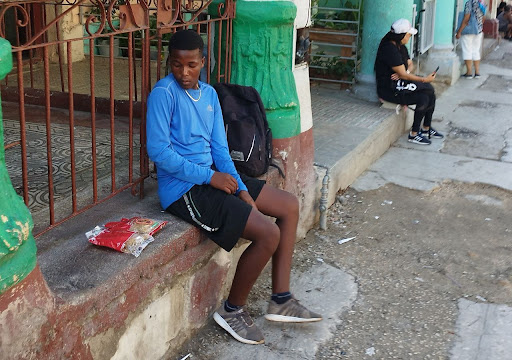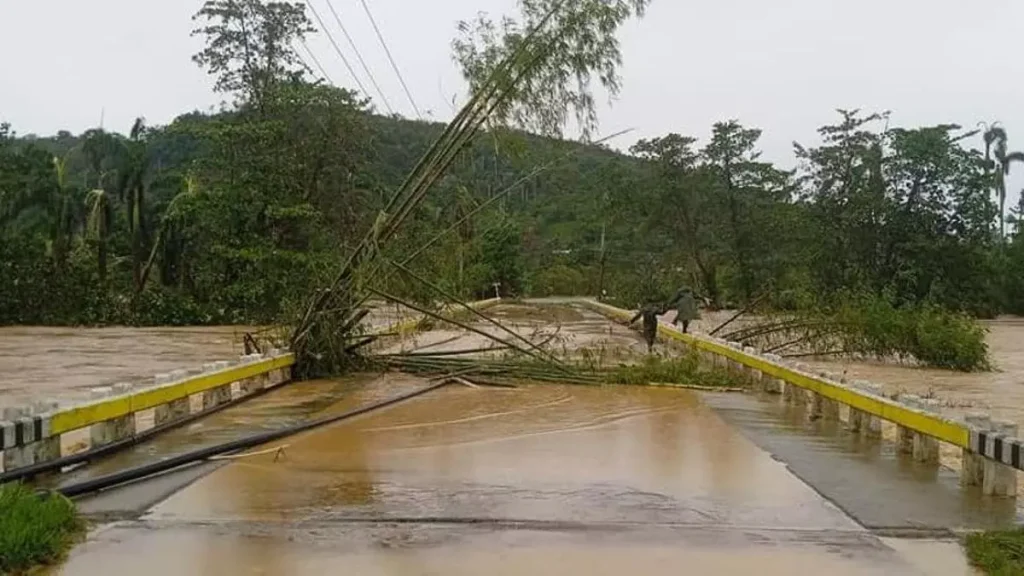Authorities are looking for two more people who are reported missing

![]() EFE/14ymedio, Havana, 31 October 2024 — The Cuban government raised the death toll to eight after the passage of Hurricane Oscar and said that the authorities are looking for two people who are reported missing, the state press reported on Wednesday.
EFE/14ymedio, Havana, 31 October 2024 — The Cuban government raised the death toll to eight after the passage of Hurricane Oscar and said that the authorities are looking for two people who are reported missing, the state press reported on Wednesday.
This is the first official figure on disappearances, more than a week after Oscar’s scourge in the east of the country.
The two missing are a 42-year-old man and a 35-year-old woman, both from the town of San Antonio del Sur, in Guantánamo, according to a statement from the Civil Defense General Staff.
San Antonio del Sur, along with the neighboring municipalities of Baracoa, Imías and Maisí, was one of the territories most seriously affected by the floods of October 21, with numerous damage to the housing stock, health centers and schools, and losses of personal property.
This Tuesday, for the first time since the occurrence of the meteorological disaster, photographers from some international media accredited in Cuba – including EFE – had access to San Antonio del Sur. continue reading
This week some roads were opened to allow aid to reach the settlements that have been incommunicado
The United Nations resident coordinator in Cuba, Francisco Pichón, indicated that he will present an “action plan” prepared by UN agencies, which includes providing funds and programs “in order to join the concentrated recovery efforts of the national authorities” in support of the victims.
The intense rains that accompanied Oscar, which continue to affect the region, caused the flooding of rivers, landslides from the mountains that brought down mud, and the isolation of communities that rescuers have not been able to reach due to the state of the roads.
But this week some roads were opened to allow the passage of aid to settlements that have incommunicado, especially in mountainous or flooded areas.
Seven of the deceased were located in San Antonio del Sur, while the other deceased was located in Imías
Cuban President Miguel Díaz-Canel visited Imías on Wednesday to assess the damage after Oscar’s passage.
Also, the Guantanamo Defense Council reported this Wednesday that Oscar’s passage through the province damaged more than 11,000 buildings, including homes and public infrastructure, and affected more than 13,000 hectares (32,124 acres) of various crops.
Power cuts continue in the region due to the fall of 98 power poles and damaged transformers in five municipalities
The official provincial newspaper Venceremos reports that houses suffered the greatest damage, with 257 total collapses and 360 partial, while 9,198 houses lost part of their roofs, among other damage.
Facilities for 627 state institutions have been affected. Among them, the damage is mainly concentrated in commerce, with 183 establishments, health centers (71), and Education, Culture and Sports sectors, with 210 effects recorded.
Electricity cuts continue in the region due to the fall of 98 poles and damaged transformers in five municipalities, where more than 56,000 customers are still without service (some 35,000 now have power).
The report points out that to alleviate the generation deficit, 69 generators are being used to supply isolated communities, food production centers, public health centers and other services.
In agriculture, negative effects are reported in 13,255 hectares (32,754 acres) of banana, coconut, cocoa, fruit, forest fuels and, in particular, coffee, one of the main productions of the territory.
The committee points out that 14 national and foreign donations have been received, nine of them sent by the United Nations World Food Program
The recovery begins gradually with the arrival of materials and donations for the restoration of infrastructure and land communication with the four affected municipalities. This includes returning most of the evacuees to their homes, and the planting and harvesting of coffee in the unaffected areas.
In addition, the committee points out that 14 national and foreign donations have been received, nine of them sent by the United Nations World Food Program, plus others from the Bridges of Love initiative and The Peoples Forum in the United States.
Hurricane Oscar – the first meteorological event that directly hit Cuba in the current hurricane season – penetrated Cuba on Sunday the 21st as a category 1 hurricane (maximum of 5) on the Saffir-Simpson scale, very close to the coastal city of Baracoa, in Guantánamo, and became a tropical storm before leaving the next day through an area near Gibara, in the province of Holguín.
Translated by Regina Anavy
____________
COLLABORATE WITH OUR WORK: The 14ymedio team is committed to practicing serious journalism that reflects Cuba’s reality in all its depth. Thank you for joining us on this long journey. We invite you to continue supporting us by becoming a member of 14ymedio now. Together we can continue transforming journalism in Cuba.


















